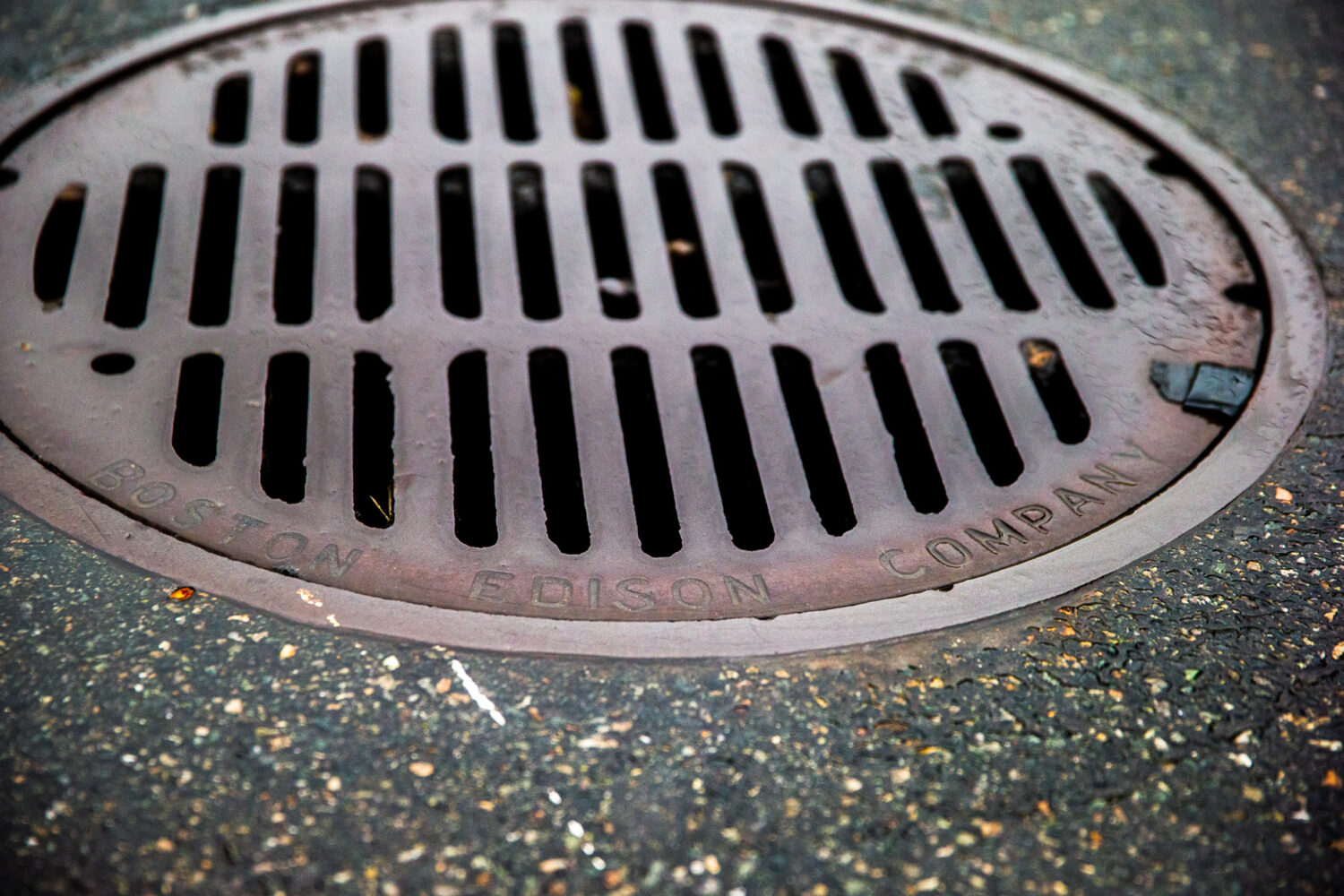A manhole explosion at the Walnut Street and Lakewood Road intersection in Newton around 3:30 PM on April 6 has raised safety concerns among local residents. The incident led to a power outage that exceeded two hours and affected around 6,500 residents. On Thursday, Newton resident Nathan Phillips questioned details found in a statement that Eversource had provided to the City the day after the explosion.
In response to Phillips’s inquiry, Eversource has revised and amended its statement, indicating it had misstated the location of the cable failure and noted that no natural gas was measured during repair operations at the Walnut/Lakewood intersection where the explosion occurred. Eversource does not believe the explosion involved natural gas, as its atmospheric testing prior to the repairs was negative for explosive gases and the observed aspects of the explosion are explainable by the electrical fault that occurred.
Citing an earlier email sent to City officials the day after the explosion by Annemarie B. Walsh, Community Relations & Economic Development Specialist at Eversource, Phillips had questioned the reference to a cable failure at 79 Walnut Street and its potential connection to the explosions. Walsh’s April 7 statement on the incident sent to City officials, including Mayor Ruthanne Fuller, had said: “The outage yesterday was caused by a cable failure in the manhole in the vicinity of 79 Walnut Street. This cable feeds to the Homer Street Station. The outage impacted about 6,500 residents. Power was restored to all customers by switching them to an adjacent supply (switching to a different circuit). The manhole cover at this location is vented with slots so the flash was able to go through the slots – It did not lift or dislodge.”

Eversource Revises Statement and Discounts Gas Leak as Cause of Explosion
In response to Phillips’ inquiry, Walsh provided a revised and expanded statement on behalf of Eversource indicating that 79 Walnut Street had been referenced in error and furthermore noted that repair crews saw no indication of a gas leak: “On April 6, 2023, Eversource responded to a manhole event that occurred near the intersection of Lakewood Rd and Walnut St. Eversource crews arrived onsite and entered the manhole in question to determine the point of failure. Before both removing a manhole cover and entering a manhole, Eversource crews perform atmospheric testing. No gas readings were found around or inside the manhole. While inspecting the manhole, located at Lakewood and Walnut (not 79 Walnut St as previously indicated) Eversource found a mechanical cable failure between two different types of underground cables resulting in an electrical fault. Eversource crews made both temporary repairs to the cable that evening and permanent repairs in the days following. Every time an Eversource crew entered that manhole at Lakewood Rd and Walnut St, the atmospheric testing was performed, and no gas readings were found.“
Phillips responded to Walsh that “these measurements occurred *after* the explosions and fire occurred, after subsurface conduits and utility holes were, hopefully, ventilated,” and he questioned what otherwise could have fueled flames reportedly seen coming from the manhole cover.
An Eversource spokesperson contacted by Fig City News on Tuesday indicated that the crew involved checked the manhole atmosphere for safe conditions prior to entering and did not need to ventilate it. The spokesperson said that flash and smoke could be explainable by the cable connection fault alone, and based on the lack of explosive gas readings subsequent to the event, Eversource has no reason to believe gas played a role in the event. The spokesperson indicated there was likely only one explosion.
Newton electricity is supplied by Eversource, while natural gas is supplied by National Grid. Eversource was previously NStar, which was formed by a merger that included Boston Edison Company. Many manhole covers still retain the Boston Edison initials.
Leak Found in Front of Newton Education Center
After receiving this clarification, Phillips visited the manhole cover at 79 Walnut Street (in front of the Education Center) to take gas readings. Using his Bascom-Turner measurement device, which had been factory calibrated on April 4, he found a steady 1.1% methane concentration a few inches below the manhole cover. Phillips explained that a 1.1% level in the manhole originates from a leak in a National Grid gas main, which at the point of the pipeline leak, is 100% natural gas (which is typically 90-95% methane). Phillips called 911 at the time of his discovery, and the Newton Fire Department responded to the scene immediately. Phillips wonders why the initially reported location of the cable fault coincidently happened to have a gas leak.
 |  |
Phillips had pointed out to Eversource that the location of the cable failure that it cited is 2.3 miles from the explosion site, while the Homer Street Station, which feeds power to the affected area, is 0.8 miles away. Phillips, who is a ratepayer advocate with the ISO New England Consumer Liaison Group, questioned the cause of the explosion and requested clarification about which manhole cover was involved. He also sought information on the equipment that exploded at or under the street at Walnut Street and Lakewood Road.
Ongoing Concerns on Walnut Street Safety
In his initial inquiry, Phillips had raised concerns about a hazardous gas leak discovered by National Grid within a few feet of the 13.8 kV underground electric line at 956 Walnut Street, approximately 1,000 feet downhill from the explosion site. He speculated that because methane gas is lighter than air and rises, it could have traveled to the explosion site and contributed to the blast. Phillips has repeatedly detected methane gas in an Eversource utility cover in front of 960 Walnut Street using his personal measurement equipment.
Phillips indicated that National Grid had assigned a Grade 1 Hazardous rating to the leak and that a gas worker attempted to repair the leak for the second time since its discovery and confirmed that it was still classified as Grade 1 Hazardous. This means that for up to 21 days following the explosions, Walnut Street remained in a hazardous condition, unbeknownst to the community. The threshold for a Grade 1 leak in a confined space is a leak associated with a confined space that leads to a methane concentration of 4% or greater, with 4% being 80% of the gas’s Lower Explosive Limit (LEL). Any detectable gas within five feet of a building foundation is also classified as a Grade 1 Hazardous leak. Trained gas workers are also authorized to declare a gas leak as Grade 1 due to the totality of circumstances observed at a particular location, such as the presence of a high-voltage electric line in close proximity to leaking gas. In order to explode, the concentration of methane must be in the range of 5.6-15% with sufficient oxygen available as well. Natural gas is 90-95% methane, along with 1-3% ethane and trace amounts of nitrogen and carbon dioxide.
Phillips said, “We can’t assume gas is safely leaking along Walnut Street in close proximity to buried high-voltage electrical infrastructure.” Phillips explained that a 16-inch main distribution pipe is running down the center of Walnut Street from the Beacon/Walnut intersection with a gas pressure maintained at 22 pounds per square inch relative to atmosphere (PSIG) and a 12-inch local distribution pipe maintained at approximately 0.5 PSIG (14 inches water column). He believes both are in need of repair by lining the existing 16-inch pipe, consolidating connections onto this repaired pipe, and decommissioning the 12-inch pipe.
Newton’s Gas Leak Situation
Ellie Goldberg, a member of Green Newton and Mothers Out Front Newton, suggested that residents visit the A Future Without Gas website for an article on the April 6 explosion and the map below, which shows gas leaks in Newton by grade.

Goldberg expressed concern about the limited oversight and accountability that National Grid has with regard to addressing gas leaks. She said it is a regional problem and that Newton leads in terms of the total quantity of gas leaking across the city. Goldberg said methane gas leaks accelerate global warming, harm human health, kill trees, raise utility rates, and — assuming the April 6 explosion was gas-related — pose acute safety risks. “I think we have a right to know about our gas infrastructure, and even more, we have a right to safety,” Goldberg said. Goldberg works in the area of children’s environmental health, which sensitized her to this issue.
Goldberg says that Newton has three to four emergency repairs per week, and these tend to be associated with lower-grade leaks. She noted that because the cost of leaks is passed on to ratepayers, National Grid has no financial incentives to reduce leaks through repairs, and it makes a profit when replacing rather than repairing a line.
City Councilor Alison Leary, who chairs the City Council’s Public Facilities Committee, is very concerned about the gas leaks in the city. “Our gas lines are leaking like a sieve, and we can’t get ahead of it. It’s like a game of whack-a-mole,” said Leary. She said it was lucky that no one was injured in this incident.
On Thursday, Leary formally requested that Mayor Ruthanne Fuller “request an investigation into the manhole explosions on Walnut Street by the Department of Public Utilities (DPU).” She noted that Police Chief Carmichael had told TV news the night of the incident there had been three explosions.
Leary continued “Following the initial explosion on April 6th gas leaks continued to be identified along this section of Walnut Street. This includes a Grade 1 gas leak that was discovered on or before April 16th that was reported as repaired. However, as of yesterday (April 26), National GRID workers were still on site working to fix the leak. I am concerned that this is a potentially hazardous condition that has existed for up to 9-10 days after the initial manhole explosions. I believe a public safety issue continues to exist.”
Leary said, “We cannot move fast enough on this at the state level” to correct the regulatory frameworks to incentivize utilities to repair and contain leaks rather than just invest in long-term infrastructure that she believes should not be needed in the long term as communities move toward electrification. Phillips concurs with the need for an DPU investigation. He pointed to television interviews that convey the magnitude of the explosions such as per WCVB TV News: “Suddenly, we heard this massive explosion and then the house started to shake,” one nearby resident said. “It was almost like it was an earthquake or something. And so, yeah, it was really startling when it happened. The explosion kind of happened like one and then 30 seconds later, another big explosion,” the resident said.” https://www.wcvb.com/article/newton-massachusetts-manhole-explosion-widespread-power-outage/43534216#
Asked for comment, the Mayor’s office pointed to Mayor Fuller’s Feb 2,2023 newsletter, which notes “In part as a result of our DPW Commissioner Jim McGonagle and our team raising the importance of major leaks, National Grid has repaired the 16 largest Grade 3 super environmental impact (SEI) gas leaks in the City of Newton as well as several smaller leaks.
We have requested that National Grid prioritize the work by leak volume and keep fixing them a timely manner not just the next set of highest leaks but all of them. (fyi: The City of Newton has no authority to repair gas leaks. That responsibility falls solely on National Grid.)“
Goldberg applauded the city for this prioritization, but pointed out there are still a very large number of Grade 3 leaks that need to be addressed across the city.
Phillips indicated that the large pipes on Walnut Street are prime candidates for lining and that this work could be done without trenching or disrupting customer service. Phillips is on the faculty at Boston University in the area of Environmental Science and has been interested in studying gas leaks in the Boston area since 2011.
For earlier coverage of this incident, see Increased call for a Gas Leak Working Group following April 6 manhole explosion.
Ed. Note: An earlier version of this article had indicated that Eversource rather than National Grid had found the Grade 1 leak.






